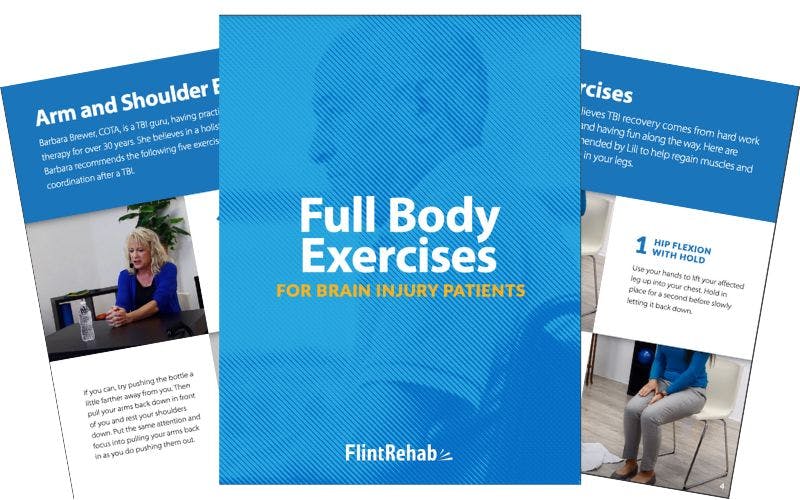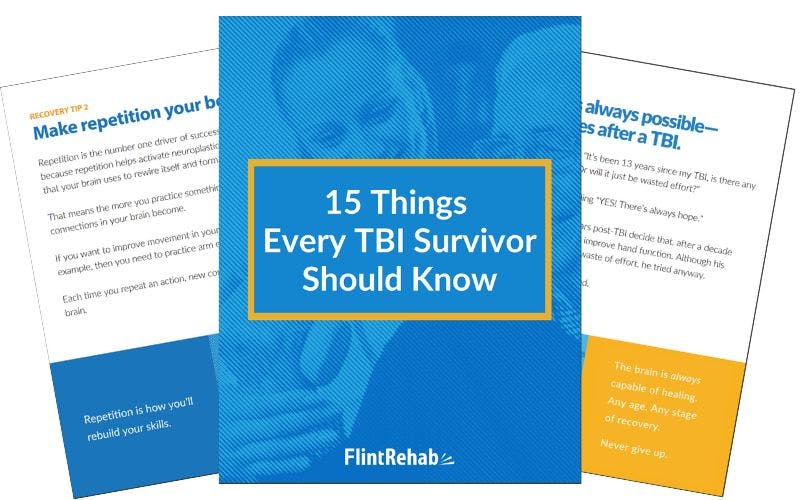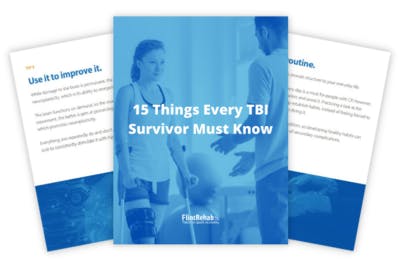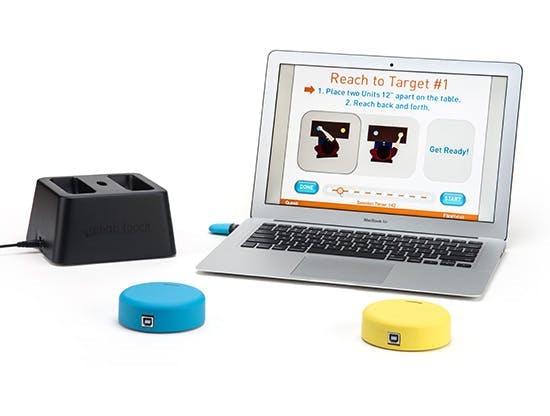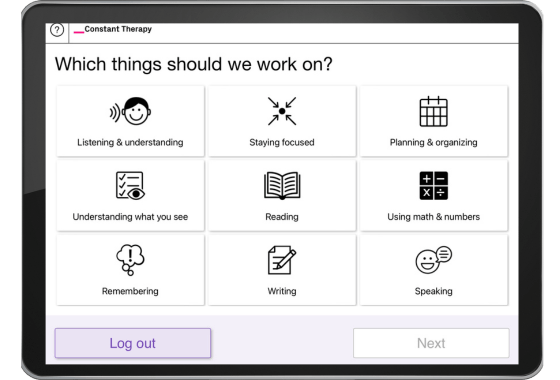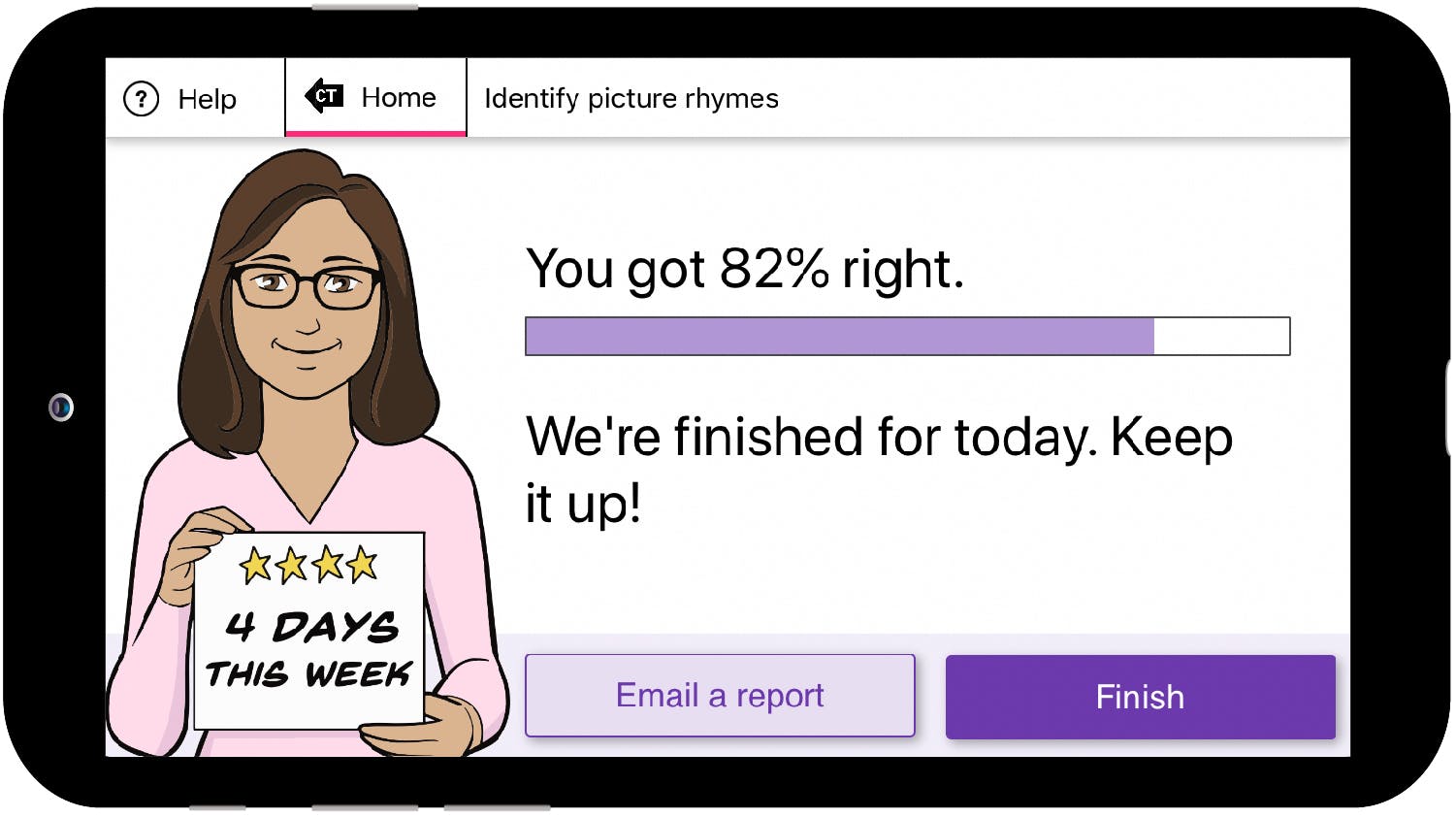Predicting the outcome of traumatic brain injury (TBI) recovery can be difficult. While statistics can help give an overall picture, they are not always indicative of how a specific individual might fare.
Recovery outcomes after traumatic brain injury vary widely, largely dependent upon the severity of the injury. Following a brain injury, doctors often use assessments, such as the Glasgow Coma Scale or Ranchos Los Amigos Scale, to determine an individual’s current state and prognosis.
However, even with the most accurate tests, is not possible to predict every possible TBI outcome. With consistent brain stimulation and practice, some individuals beat the odds and achieve a fuller recovery than what was expected.
This article will examine current brain injury recovery statistics and provide an overview of how specific factors that may influence functional outcomes. Additionally, strategies to promote the fullest TBI recovery possible will be discussed.
Use the links below to jump directly to a certain section:
- Mild brain injury recovery statistics
- Moderate to severe brain injury recovery statistics
- Factors that can influence recovery
- Strategies to achieve an optimal recovery
Mild Brain Injury Recovery Statistics
Individuals who have sustained a mild brain injury, also known as a concussion, tend to have the most positive prognoses. Here are a few mild traumatic brain injury recovery statistics:
- Mild brain injuries comprise nearly 85% of all traumatic brain injury cases
- At 3-6 months post-injury, an estimated 18.3 to 31.3% of individuals experience post-concussion symptoms, based on a 2023 systematic review and meta-analysis.
- One year after a mild traumatic brain injury, 98% of individuals are functionally independent, while nearly half experience a complete recovery, according to a 2023 study that included 856 individuals with mild TBI.
- 45% of those with a sports-related mild TBI recover within 2 weeks, 77% recover by 4 weeks, and 96% experience clinical recovery by 8 weeks post-injury, according to a 2020 study examining the progress of nearly 600 individuals.
- Women tend to experience more persistent symptoms following a mild TBI, based on a 2021 study of 2,000 mild TBI cases.
These statistics provide an encouraging outlook for individuals with mild brain injuries. Although not everyone fully recovers after a mild TBI, almost all individuals achieve functional independence by one year post-injury.
Moderate to Severe Brain Injury Recovery Statistics
On the other hand, those with moderate or severe TBIs often have a longer recovery and more persistent symptoms. According to statistics gathered from the TBI Model System Program, at two years post-injury:
- 30% of moderate to severe brain injury survivors need at least some assistance from another person. 70% live independently full time, and over 90% live in a private residence.
- 50% of individuals with moderate to severe TBI relearn how to drive after brain injury, though there may still be restrictions on driving at night or for long distances.
- 30% have a job, although it is usually different from what they had before their injury.
There is even hope for recovery after losing consciousness for a period of time. A large 2021 study found that:
- 82% of moderate to severe TBI survivors who were in a coma, vegetative, or minimally conscious state at the start of inpatient rehabilitation regained consciousness before being discharged, and 40% achieved full or partial independence by the time they were discharged.
- 79% of moderate to severe TBI survivors without a disorder of consciousness at the start of rehabilitation were also able to achieve full or partial independence by their discharge.
Another 2021 study with almost 500 participants found that one year after injury, 52.4% of those with a severe injury and 75% of those with a moderate TBI obtained a favorable outcome. These individuals recovered enough that they could function independently at home for at least 8 hours per day. Additionally, 12.5% of those with a severe TBI and 19% of those with a moderate TBI achieved a full recovery after one year.
Therefore, although a full recovery is not guaranteed after any brain injury, it is possible. It is also important to remember that there are many factors that influence brain injury recovery statistics. While some numbers may seem discouraging, there is always hope for recovery through rehabilitation and adaptive brain rewiring.
Factors that Influence Brain Injury Recovery Outcome
While statistics can be helpful to know what to expect after a brain injury, they only provide part of the story. To further understand the chances of recovery, doctors have identified five variables that strongly influence an individual’s ultimate recovery:
1. Initial Glasgow Coma Score
An individual’s initial Glasgow Coma Score (GCS) upon arriving at the hospital is usually a good indicator of their potential for recovery. The GCS measures three functions: eye opening, verbal response, and motor response. These functions are then each ranked on a 1-5 scale, with each individual gaining a total score of 3-15 points.
Higher scores on the GCS signify a higher level of function, which means a higher likelihood of a good outcome. Even with a low GCS score, however, it is still possible for the person to achieve a good recovery.
2. Duration of Post-Traumatic Amnesia
Post-traumatic amnesia refers to a stage of the brain injury recovery process in which the brain can’t form any new short-term memories. It is characterized by a state of confusion and disorientation regarding time, place, and person. In other words, those with post-traumatic amnesia have no memory of where they are or how they got there, and they have no continuous memory of day-to-day events.
Studies suggest that the longer post-traumatic amnesia lasts, the more severe a person’s disability after injury will be. Conversely, shorter periods of post-traumatic amnesia have been associated with higher chances of recovery.
3. Neurological Reflexes
The presence (or lack) of certain neurological reflexes is another factor that can predict brain injury recovery outcomes. Some neurological signs that doctors look for after a TBI include:
- Pupillary reactivity. If the pupils shrink in response to bright light, the brain stem is intact. This is an excellent sign.
- Oculocephalic response. When the head is turned to the left, the eyes should turn the opposite direction, to the right.
- Gag reflex. Individuals should gag or cough if a cotton swab or endotracheal tube is placed down their throat.
The presence of these reflexes is an excellent indicator of recovery. However, if these reflexes are absent, there is usually a poor prognosis.
4. Hypotension
Studies have shown that low blood pressure after an initial brain injury can be an indication of poorer outcomes. Fortunately, hypotension can be treated almost immediately if it is identified early enough. This makes it the only prognostic factor that can be significantly changed, which can improve outcomes.
5. Age
Finally, age can have a strong influence on the extent to which a person recovers from TBI. Studies have reported that those between age 18-34 have significantly better outcomes than older adults, while those over age 65 are 3.7 times more likely to have an unfavorable outcome. In general, people over 60 or under the age of two have the lowest chances of achieving a good recovery from brain injury.
How to Increase the Chances of Achieving a Full Recovery
While many statistics on brain injury recovery can be encouraging, focusing too much on certain facts may be disheartening. This is why concentrating on generalizations or percentages may actually be counterproductive for brain injury recovery. Instead, it is more productive to focus on maximizing one’s personal recovery. To accomplish this, try to:
- Stay positive. Do not view brain injury survivors as just another statistic. This leads to limiting beliefs that prevent survivors from reaching their full potential. Staying positive, in contrast, can give individuals the motivation to continuing pursuing recovery.
- Practice therapy at home. The brain possesses a natural healing mechanism called neuroplasticity that allows it to rewire itself. Since the best way to engage neuroplasticity is through daily therapy exercises, it is essential to continue working on therapeutic exercises, even at home.
- Stay physically and mentally active. In addition to repetitively practicing therapeutic exercises, focus on stimulating the brain by being active. Both physical and cognitive activities, such as talking a walk or doing puzzles, can activate different areas of the brain to promote recovery.
- Push through plateaus. Periods of very slow progress, known as plateaus, are normal parts of the brain injury recovery process. Try not to get discouraged and to continue pursuing recovery even throughout these periods. Eventually, positive changes will start occurring again.
No matter how long it has been since one’s brain injury, it is always possible to improve. Using these tips can help boost the odds of making a fuller recovery from TBI.
Understanding Brain Injury Recovery Statistics
In the end, because every TBI is unique, it is not possible to fully predict every outcome. While doctors try to be as accurate as possible, there are variables that they cannot always see.
Each day there are new stories of brain injury survivors surprising their doctors with their achievements. And in every case, these survivors were the ones who ignored negative predictions and persevered through overwhelming odds. Staying positive and consistently pursuing recovery has the potential to boost functional outcomes and promote an optimal recovery.


